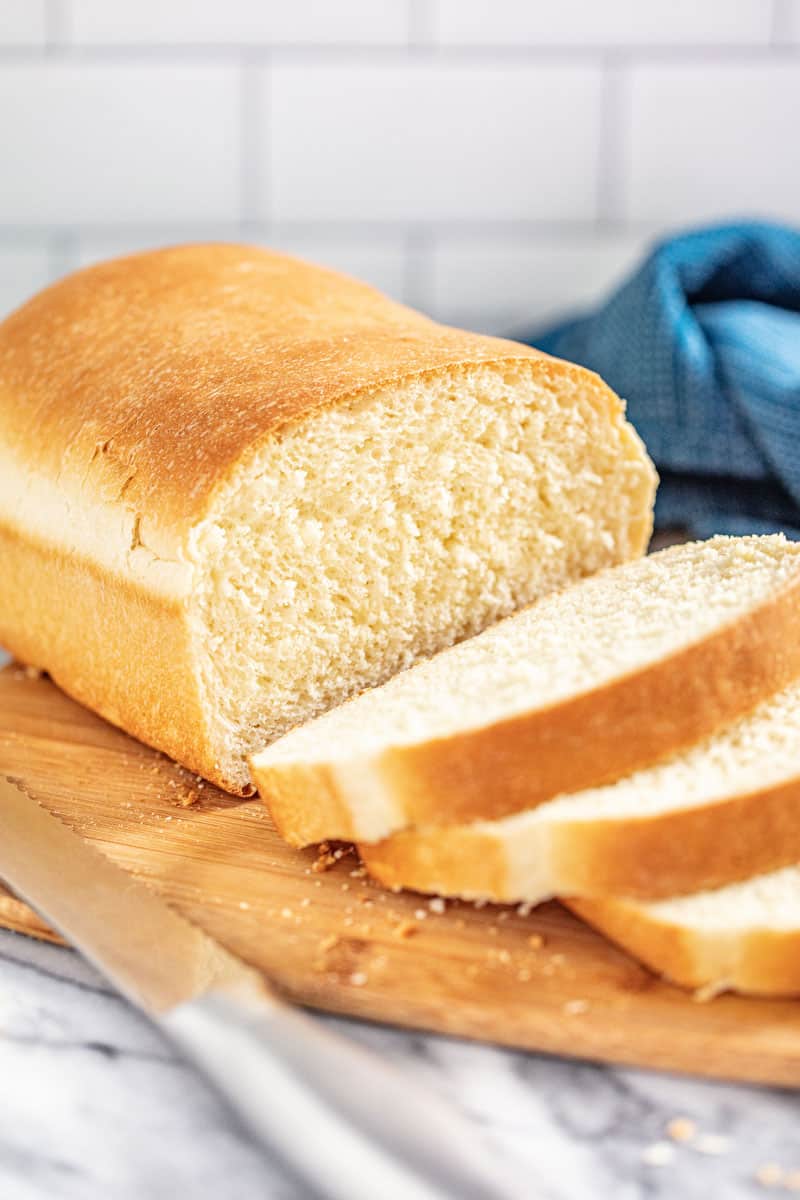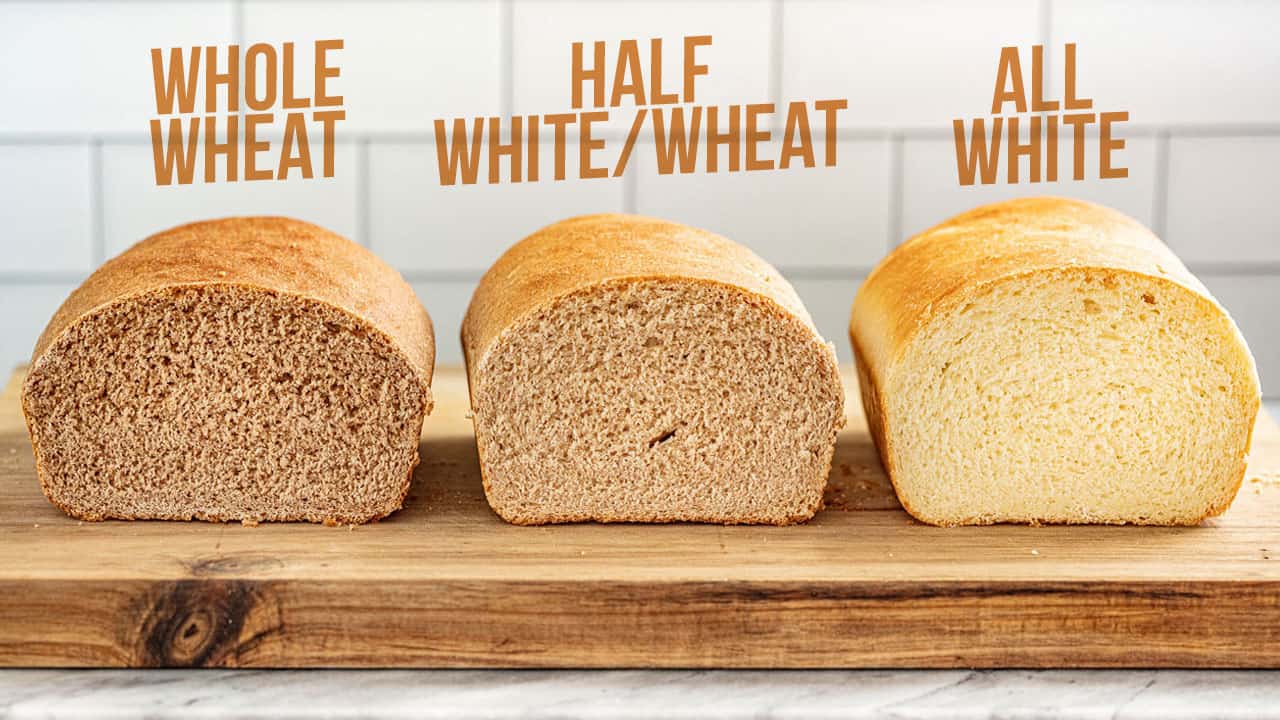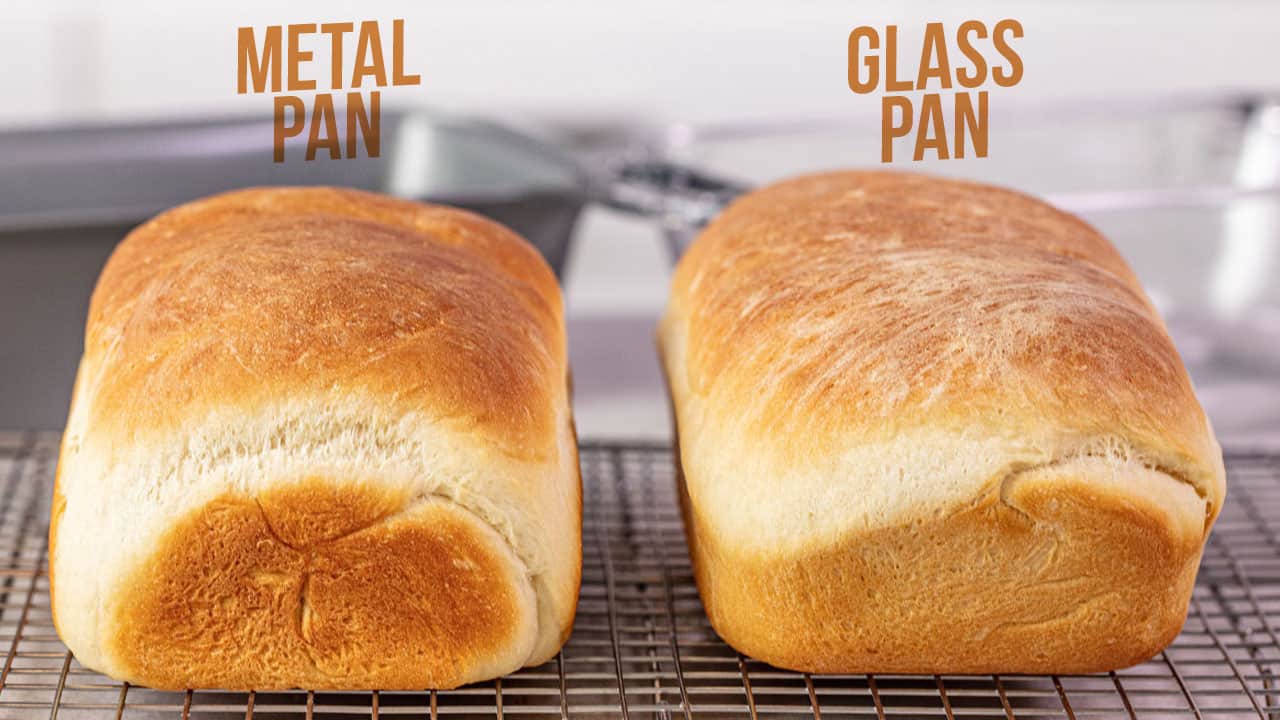The Ultimate Guide to Homemade Bread starts with a classic base recipe and then covers all of the common substitutions to guide you in customizing your bread to your own needs so you can create your own perfect loaf.

There is probably no smell on earth that is more inviting, comforting and symbolic of home than homemade bread. It is like a magnet for family and friends. Many of us have a recipe we’ve tried or one that has been passed down through family and friends. But making bread is also a science. There is a lot that goes into it and there are a lot of possible variations. We’ve included some of those here. After making many loaves of bread and trying many variations, the recipe we decided we like best for its taste and texture is made with milk instead of water, and requires very little kneading.
You will start by warming the milk in the microwave, and then combining that with all of the other ingredients in a stand mixer and letting it knead until a dough ball is formed. This only takes a couple minutes. That dough is placed in a greased bowl to rise for 90 minutes and then transferred to two greased bread pans to rise for another 60 minutes, then baked. You’re going to learn that the hardest part about this recipe is waiting to eat the bread!
SUBSTITUTION GUIDE
- Water vs. Milk
Milk changes bread recipes by producing a softer loaf, due to the milk fat content, which also gives bread a richer flavor. Bread made with milk browns more easily than bread made with water, as lactose or milk sugar will caramelize as it bakes. - Oil vs. Butter
Butter has a lower smoke point than oil, meaning it will brown before oil will when baked. While butter and oil are interchangeable in the same amount when making bread, using butter does produce a better flavor. - Honey vs. Sugar vs. Sugar Replacement
Honey and sugar are fairly interchangeable. You can replace sugar with honey in the same amount. Sugar replacements vary and usually come with instructions for substitution and what amounts to use. The kind of sweetener you use in making bread will alter the end result. Honey may add a floral element, depending on the source of your honey, while artificial sweeteners may add a metallic after taste. - Instant Dry Yeast vs. Active Dry Yeast
This recipe calls for Instant Dry Yeast which requires no proofing time. If you choose to use active dry yeast in this recipe you can do so in the same quantity and proof the yeast by adding it to the warm milk along with the sugar and letting this mixture sit for 5 to 10 minutes before proceeding with the recipe. - Wheat vs. White
Wheat flour is heavier and more coarse than white flour and will produce a more dense bread. You can use all wheat, a combination of half wheat and half white flour, or use all white flour. The results are pictured below.

-
What if I don’t have a stand mixer? Can I make homemade bread by hand?
You don’t need a stand mixer, you can knead this bread by hand. It is physically more work, but it doesn’t require a lot of kneading. You only need to knead the dough until all of the ingredients are combined and a dough ball forms that is smooth and elastic and slightly tacky to the touch.
-
Can I use this recipe in a bread machine?
Yes. This recipe will work great in a bread machine.
-
Should I use a glass bread pan or a metal bread pan? What is the difference?
Glass and metal conduct heat differently which means they bake bread differently too. A glass bread pan will produce a softer, less crispy crust. A metal bread pan, especially a darker metal bread pan, will produce a crispier crust that is darker brown in color. You can see the visual difference in the photo below with the loaf made in a metal pan on the left and the loaf made in a glass pan on the right.

If you’re looking for more bread recipes, here are some of our favorites:
- Best Homemade Dinner Rolls
- Homemade Rye Bread
- Easy Homemade Pita Bread
- Irish Soda Bread
- Garlic Parmesan Herb Bread
Watch the video below where Rachel will walk you through every step of this recipe. Sometimes it helps to have a visual, and we’ve always got you covered with our cooking show. You can find the complete collection of recipes on YouTube, Facebook Watch, or our Facebook Page, or right here on our website with their corresponding recipes.


Hi Rachel
Thank you for the recipe. I used half of both wheat and white flour. Used honey instead of sugar. After baking, i see some dense spots in the bread. What do you think went wrong? The taste is good and also when i cut the loafs, few of them seem to be separating at the points where it was rolled after the first rise. I have a feeling that the dough was little harder than it should be! The dough had a full first and second rise. Any suggestions to make it better next time:)
It sounds like you may want to use a little less flour next time. You can feel a soft loaf in the dough and exactly how much flour you add can change based on a variety of factors, including the humidity that day. Add just enough flour so that your dough is soft and tacky, but not sticky enough that it sticks to your hands.
I am a newbie at baking. Just started now during the lockdown. And I came across your recipe and if I must say, I feel so lucky! The bread was so awesome! I actually did 3 pans for this recipe. One in a loaf pan and 2 in a round pan (1 aluminum, 1 glass) as that is all the pans i have. And i really love the one in the aluminum as it turned out golden brown vs the one in the glass. I have a over the stove oven so i had to check it everytime to be sure. I added about 10 mins more. I love how soft and chewy the turn out is. The smell is divine! I am definitely saving this recipe! Thank you so much for sharing this!
I am a newbie at baking and I came across your recipe and I just have to say, it’s my lucky day! I had my very first bread and i love it! My family loves it, too!!! I actually made 3 instead of 2 loaves. I did one loaf, and 2 round breads using a round pan. And it turned out awesome! It’s so soft and chewy and i just love the taste. It smells divine! I prefer cooking it via the aluminum pan vs the glass as it turned out better and golden brown unlike in the glass. Also, i didnt have a stand mixer, i did it by spatula first then by hand and as you said, it the same. It’s really good! Thank you so much for sharing this!
Absolutely delicious! First time bread maker and this recipe was VERY easy to follow.
Had bought a loaf of homemade bread from our local Amish market, and when I got it, it was fresh from the oven – but
my hubby and I both thought this one was much better – seemed to have more flavor – I used melted butter, not oil, and milk.
Is it ok to put raisins inthe dough?
yes! A cinnamon/raisin swirl is a common favorite!
Awesome!
Thank you for this ridiculously amazing bread! I loved it so much not only can I not stop baking it, I shared it on our blog Flaky Bakers today! Thank you!
Can you use a mix of lard and butter instead? Example 1tbs lard plus 2tbs butter?
Lard can be substituted for other fats like butter in the same quantities. Lard does have a distinct flavor though which may impact the flavor of your bread.
The first time I tried this, it did not rise at all. I tried again and this time proofed active dry yeast in some of the milk and sugar, and voila! The rise was beautiful and the loaves were great. My husband couldn’t wait to cut into them. Delicious homemade sandwich bread with no preservatives. I wish I could share the photos with you! Thank you!
This recipe is delicious! How would you recommend storing it?
Store in a bread bag, or in a plastic airtight bag. It is best if eaten within 3 days. You can also freeze the loaf if you won’t eat it in time.